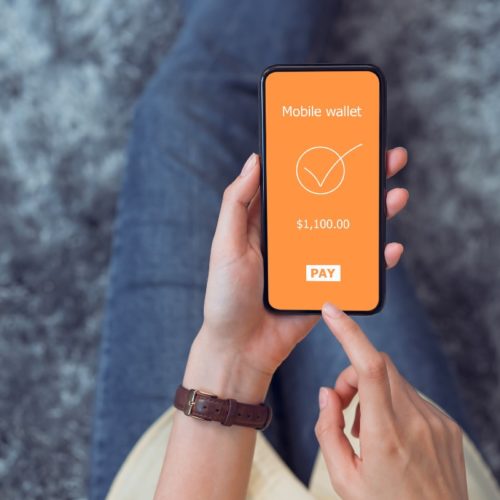A bank statement is one of the most important documents financial institutions issue to customers.
At a fundamental level, this document serves as a complete record of the account’s overall balance. As an account holder, you must know what it contains and how to read it.
What to look for in a bank statement
Now that you have a basic understanding of a bank statement and why it’s essential, here’s a breakdown of how to read one.
1. Personal and account information
A bank statement contains personally identifying information including your name, current address, phone number, and any other information you provided when opening the account.
It’s a good idea to review this information from time to time to make sure nothing has changed—or that it has changed when you’ve moved or gotten a new phone number. In such cases, the bank won’t discover this information automatically. You have to inform them about any changes. Otherwise, you’ll risk having statements sent to the wrong location.
In addition, the bank statement also tells you about your account. It contains a variety of information including your account number, account type, and statement period, among other things.
Learn more:
2. Statement summary
After confirming your personal information, take a look at the account summary for a quick rundown of your account’s activity during the statement period.
Here, you’ll see your beginning balance from the start of the statement period, as well as the total number of deposits, withdrawals, fees, and ending balance.
The statement summary also provides your account’s current interest rate.
3. Transaction record
After you take a high-level look at your statement summary, you’ll want to roll up your sleeves and go through each transaction.
This could take a bit of time, but it’s worth the effort. At the very least, you’ll want to confirm you haven’t been the victim of identity theft.
Look at every withdrawal, deposit, and transfer that you made during the statement period. You’ll also want to scour the document for any fees. Sensing a theme here?
Most statements show transactions from oldest to newest, making it easier to go through the document. The transaction record should also have a description of the transaction that took place, a date, and the dollar amount.
Remember that it can get tricky because every transaction won’t have correlating descriptions that are easy to read.
For instance, if you use direct deposit, it might not say your company’s name on the statement.
Why read a bank statement?
The idea of reading a bank statement may seem silly today. After all, you can very conveniently access your account balance by simply logging into an app.
Yet there’s a big difference between checking a balance and reviewing your bank statement.
Here are some of the top reasons to read your bank statement.
Identify errors
Bank statements aren’t always correct. A company might bill you for the wrong amount or even bill you twice. Further, a payment might not go through as expected, or a bank may accidentally hit you with an unnecessary fee.
Billing errors happen frequently. It’s not always easy to spot them when checking your account balance. Sometimes, you have to look deep into your digital or paper statements to catch an error.
Avoid overdrafts
A daily account balance is not always an accurate representation of what’s in your account. It just shows what you have at the time. The amount could change quickly if you have a check out in the mail or if an automatic payment is set up.
Checking your bank statement gives you an accurate assessment of your balance, helping you to avoid expensive overdraft fees.
Discover bank fees
Banks are notorious for issuing fees to customers and burying them in monthly statements. Always check your bank statement to see if a bank hits you with an undeserved fee.
If you discover a fee that you either disagree with or are unhappy about, don’t be afraid to call the bank and politely ask for an explanation.
In some cases, a bank may issue a courtesy refund. Or the agent may be able to switch your account to one with minimal fees. It’s always worth trying.
Notice changes in interest rates
Interest rates can fluctuate without notice, changing the amount you receive in interest payments.
Make sure to track your interest rates over time so that you don’t think you’re getting a better rate than you’re actually receiving.
It’s also worth noting that interest rates might change based on the type of account you have. For example, a savings account will typically accrue more interest than a checking account.
Tips for managing a bank account
Check your account daily
It’s not easy going back and verifying transactions from several weeks ago. The better option is to take 10 to 15 minutes every few days to verify your account statement. Make this a habit so that you’re always aware of any changes or suspicious activity.
This may sound like a pain, but it’s a great piece of financial advice and an integral part of having the money mindset. Train yourself to always know the exact amount of money you have in your account. You have to start obsessing about money if you want to earn more and achieve financial freedom.
If you practice this approach, reviewing a bank statement can be a breeze. You’ll be able to quickly look at your account balance and immediately recognize if something’s out of place.
Learn more:
Edit transaction descriptions as they occur
Check to see if your bank allows you to edit transaction descriptions. Most banks let you edit a description or add a note to help make it easier to understand.
For example, when you get paid, you can write a note indicating that the transaction was compensation.
Save your statements
Make sure to save your statements in a secure location, either on a removable drive, in cloud storage, or in a physical filing cabinet.
This is important for personal recordkeeping. You may also need statements from time to time: e.g., a lender may request recent bank statements when reviewing a home loan application. The lender will want to see that you have money in your account for a consistent period of time. Having a record handy can save a step down the line.
Shop around for the best interest rates
If you don’t like the interest rate your bank is offering on a savings account, don’t be afraid to shop around and explore offers from competitors.
If you’re saving through a retail bank, consider looking into an online bank that typically offers much higher interest rates—like Ally or even an American Express high-yield savings account.
Unfortunately, interest rates are pretty low across the board right now, so you’re probably not going to find anything stellar.
Making serious gains could require opening a brokerage or retirement account and putting money into the stock market or other types of investment vehicles.
Frequently Asked Questions
Why didn’t my bank send me a statement?
Your bank should send you a statement every month. If your bank doesn’t send you a statement at the end of the month, follow up to inquire why.
It’s possible you may have signed up to receive electronic statements. If so, check the email address that the bank has on file to make sure it’s correct. You might also receive an electronic statement through your bank’s web portal and should be able to log on to view your statements.
If you didn’t sign up for electronic statements, go back and check the address the bank has on file for you to make sure they have it right.
If you still can’t determine why the bank failed to send you a statement, pick up the phone and call to speak with a representative. You can typically find contact information on your bank’s website.
If a bank doesn’t have a number to call, check their website or app for a live chat feature, customer service bot, or email address. Keep trying until you get through to a live representative who can help rectify the situation.
If you can’t fix it, consider closing your account and finding a bank that values your business.
What do I do if my bank statement is wrong?
When you find an error in your bank statement, follow the steps mentioned above to get through to a representative.
It’s important to act quickly to correct the situation so that you don’t wind up paying extra or getting penalized in another way (e.g., if you’re the victim of identity theft).
Are paperless statements better than physical statements?
It largely depends on your preferences. Some people prefer to have a physical piece of paper detailing their statements while others find it more convenient and environmentally friendly to receive their statements via email or through the bank’s website.
In either case, it’s a good call to store your bank statements in a secure location for your own personal records.
Are bank promotions worth taking?
Banks sometimes offer promotions for signing up for their services. For example, a retail bank may offer $300 in exchange for signing up and keeping your account open for a certain period of time.
The general rule of thumb is to avoid doing this unless you are already sold on the account and in a position to capitalize on an opportunity. Bank promotions are typically advertising strategies… and advertising strategies almost always benefit the company more than the consumer.
Take your time when reviewing offers and promotions, and make sure that an offer is worth it before you open an account.
What is an overdraft fee?
An overdraft fee is a penalty a bank levies if you make a transaction that exceeds what you have in your checking or savings account. These fees typically hover in the $20 to $30 range.
Some banks offer overdraft protection, either alerting you about the potential fee or linking your account to another one that has sufficient funds.
If you happen to overdraft your account, call the bank and explain why it happened. Banks frequently forgive overdraft fees as long as you don’t make it a regular habit.
To prevent this from happening, always keep a little more in your account than you need. And if your account typically runs low at the end of each month, consider avoiding automatic payments.
The Bottom Line
If you have a checking account or savings account through a retail bank or credit union, be diligent about checking your account statements and account activity every month.
Don’t assume they are always accurate. This is important even if you do online banking and regularly check your account balance.
Look beyond the total amount in your account and analyze every transaction. This is a great personal finance strategy that lets you dig into your spending habits. You’ll be able to get a better sense of where your money is going and you can use that information to further optimize your budget.
Take this small step each month and your financial situation is bound to remain on track, making it that much easier to achieve true financial freedom.





No comments yet. Add your own